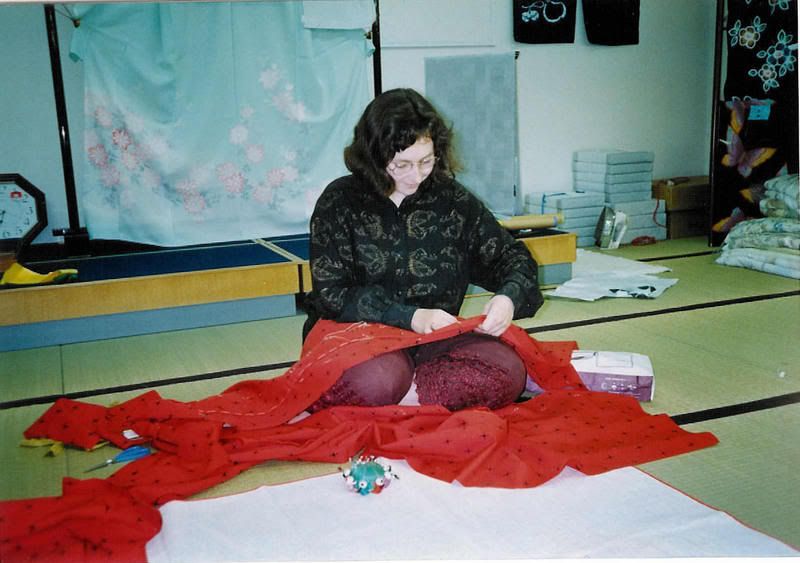
Kimono Sewing
A kimono is one of the simplest sewing projects you can make at home. It is simply rectangles of fabric sewn together to form the front, back, and sleeves. The real appeal of a kimono is in the fabric you choose. The kimono is the perfect way to display a sensational bolt of fabric to its best advantage. You can make a very simple kimono without a pattern, or a more elaborate one with a pattern.
To begin making a kimono without a pattern, you must measure the lengths of the rectangles needed, allowing extra for seams. First measure yourself (or the adult or child who will be wearing the kimono) from neck to floor. You can measure from neck to knee if you are making a short kimono for a bathroom or lounging robe. Next measure from shoulder to wrist, and finally, across the back of the shoulders.

Lay out your bolt of fabric and double the measurement from neck to floor, or floor to knee, adding an extra inch for the hem. Measure the width of the fabric. It should be wide enough to reach across your shoulders and fall down either side, just capping your shoulders. Trim it to the right width if it is wider than that. Now fold the fabric in half, so that it fits your neck to floor or neck to knee measurement. Make sure all the edges are level.
Create the front of your kimono by cutting up the length of the fabric to the fold, dead center of the fabric. Now cut out the rectangles for the sleeves from the remaining fabric. Kimono sleeves can be very wide, but you can cut them to the width that feels comfortable for you. A good rule of thumb is to use your shoulder to wrist measurement as a guide. Cut to the width of that measurement, but to twice the length, and fold the fabric into equal squares.
Putting the fold at the top, line up the sleeves with the top of your kimono, and stitch them into place, coming straight out from the shoulder. Now stitch up the side seams of your kimono and the sleeve seams all in one seam. Hem the front opening, the bottom of the kimono and the sleeve edges. Make a belt tie from a length of contrasting fabric, or white cord, and there you are - one simple kimono with no pattern at all.
If you would prefer to use a pattern for your kimono, try Butterick pattern B6698 or McCalls costume pattern M4953. Both of these patterns make up a beautiful kimono and offer fabric suggestions for all sizes.


Post a Comment